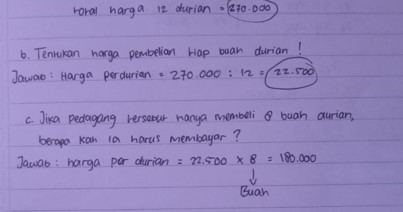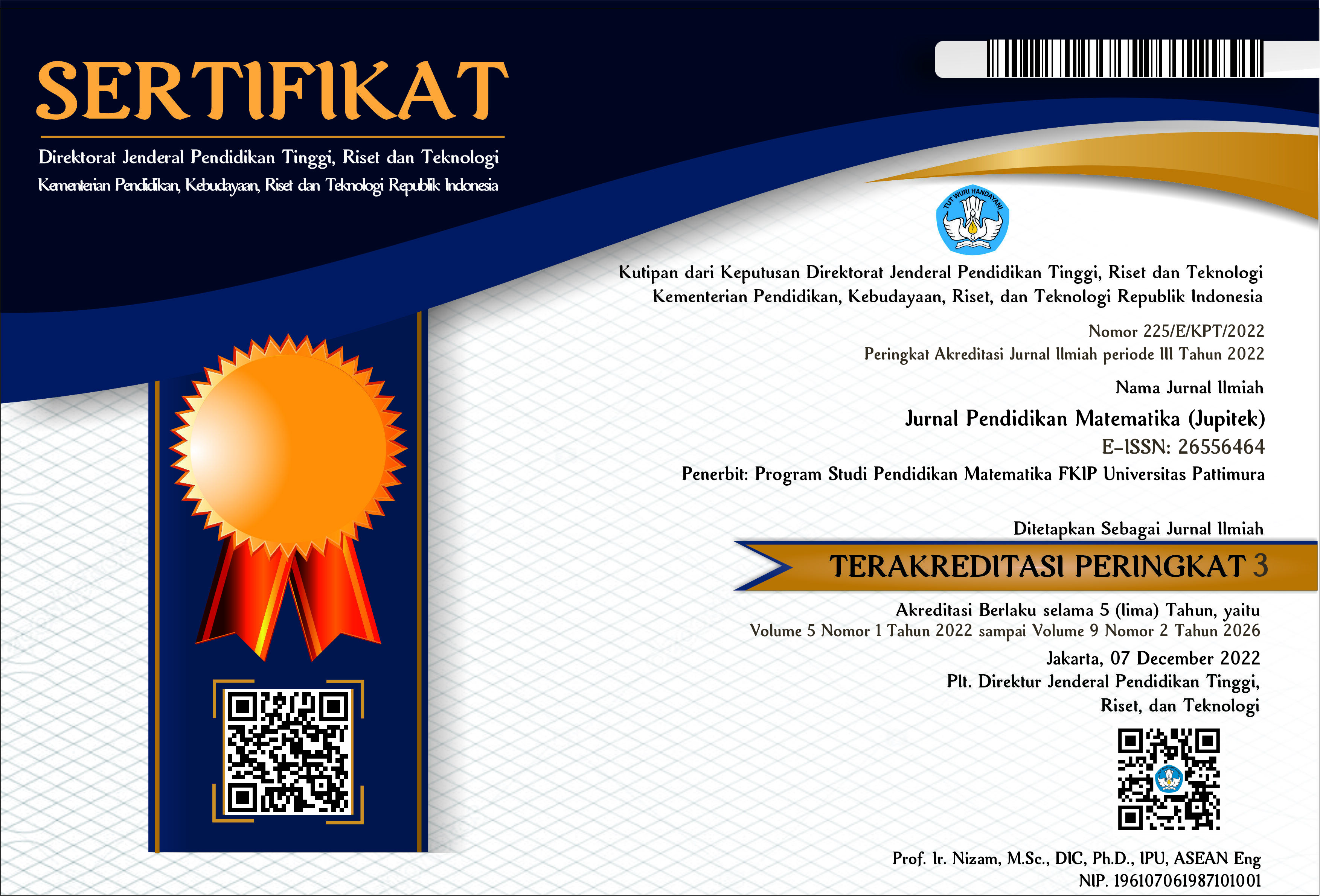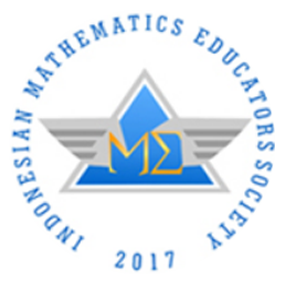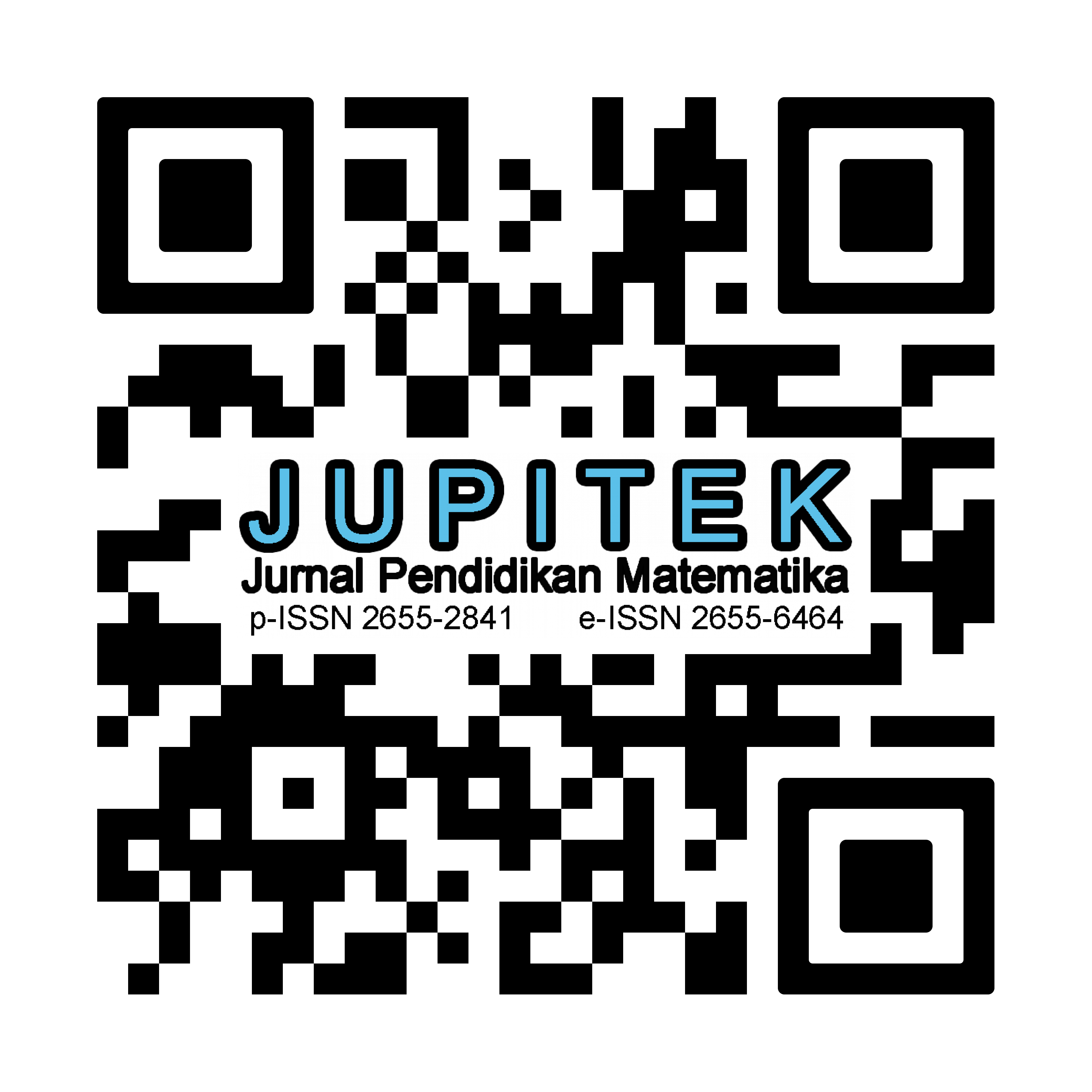PROBLEM SOLVING ABILITY OF JUNIOR HIGH SCHOOL STUDENTS IN SOLVING HOTS QUESTIONS
Abstract
In the 21st Century Learning, students are encouraged to be more creative in solving mathematical problems that lead to the High Order Thinking Skill (HOTS) level of thinking. The ability to solve problems is the ability to reason, understand problems, plan strategies, carry out procedures in solving problems, and draw conclusions. This study aimed to analyze students' mathematical problem-solving skills in solving HOTS questions. It is qualitative research with a descriptive method. The subjects of this research were 15 7th grade class students of Public Junior High School 39 Pekanbaru. The data collection method used was a test technique using a test instrument consisting of 2 HOTS questions of mathematical problem-solving ability and using the method of independent interviews to research subjects. The data collected was then analyzed through 3 stages: data reduction, data presentation, and conclusion. The results showed that 3 students had problem-solving skills, 8 had moderate problem-solving skills, and 4 had low problem-solving skills. Based on student self-tests and interviews, the seventh-grade Public Junior High School 39 Pekanbaru students average have moderate mathematical problem-solving abilities. Based on the results of the study it can be concluded that students can answer HOTS questions quite well in arithmetic material. each category of students has abilities and deficiencies in answering HOTS questions. From the results of this study, the teacher's role is very important to familiarize students with solving HOTS questions and creating learning innovations. By familiarizing students with solving problems in learning mathematics, students will not only be able to solve the questions given but also solve problems in everyday life
Downloads
References
Apriliawan, A., Gembong, S., & Sanusi, S. (2013). Analisis kesalahan penyelesaian soal uraian matematika siswa MTs pada pokok bahasan unsur-unsur lingkaran. JIPM (Jurnal Ilmiah Pendidikan Matematika), 1(2).
Amam, A. (2017). Penilaian kemampuan pemecahan masalah matematis siswa SMP. Teorema: Teori dan Riset Matematika, 2(1), 39-46.
Annizar, A. M. R., Sisworo, S., & Sudirman, S. (2018). Pemecahan Masalah menggunakan Model IDEAL pada Siswa Kelas X Berkategori Fast-Accurate. Jurnal Pendidikan: Teori, Penelitian, Dan Pengembangan, 3(5), 634-640.
Aris Shoimin, (2014), 68 Model Pembelajaran Inovatif dalam Kurikulum 2013 [68 Innovative Learning Models in the 2013 Curriculum], Yogyakarta: AR-RUZZ MEDIA
Arifin, Z., & Retnawati, H. (2015). Analisis Instrumen Pengukur Higher Order Thinking Skills (HOTS) Matematika Siswa SMA. In Seminar Nasional Matematika Dan Pendidikan Matematika Uny (Vol. 20, pp. 783-790).
Astuti, N. (2020). Analisis kesulitan siswa smp dalam menyelesaikan soal hots (higher order thinking skill). Prosiding Sesiomadika, 2(1b).
Chotimah, N. H. (2014). Pengaruh Model Pembelajaran Generatif (MPG) Terhadap Kemampuan Pemecahan Masalah dan Disposisi Matematis Siswa di Kelas X pada SMA Negeri 8 Palembang. Skripsi. Universitas PGRI Palembang.
Puspa, R. D., Asari, A. R., & Sukoriyanto, S. (2019). Analisis kemampuan siswa dalam menyelesaikan soal tipe Higher Order Thinking Skills (HOTS) ditinjau dari tahapan pemecahan masalah Polya. Jurnal Kajian Pembelajaran Matematika, 3(2), 86-94.
Irawati, T. N. (2018). Analisis kemampuan berpikir tingkat tinggi siswa SMP dalam menyelesaikan soal pemecahan masalah matematika pada materi bilangan bulat. Gammath: Jurnal Ilmiah Program Studi Pendidikan Matematika, 3(2), 67-73.
Irmawati, R., Rahayu, A., & Ratnasari, S. (2021). Analisis Kemampuan Pemecahan Masalah Siswa dalam Menyelesaikan Soal Higher Order Thinking Skills (HOTS). JEID: Journal of Educational Integration and Development, 1(4), 247-257.
Menteri Pendidikan dan Kebudayaan Republik Indonesia. (2016) Peraturan Menteri Pendidikan dan Kebudayaan Republik Indonesia Nomor 21 Tahun 2016 tentang Standar Isi Pendidikan Dasar dan Menengah, Jakarta: KEMENDIKBUD
Putri, M. E. (2021). Analisis Kesalahan Siswa Dalam Menyelesaikan Soal Matematika Bertipe Higher Order Thinking Skill (Hots) Berdasarkan Prosedur Newman (Doctoral Dissertation, Universitas Islam Negeri Raden Fatah Palembang).
Rambe, A. Y. F., & Afri, L. D. (2020). Analisis kemampuan pemecahan masalah matematis siswa dalam menyelesaikan soal materi barisan dan deret. AXIOM: Jurnal Pendidikan Dan Matematika, 9(2), 175-187.
Raufany, G., & Solfitri, T. (2019). Analisis Kesalahan Siswa Kelas X IPA 1 SMAN 2 Pekanbaru dalam Menyelesaikan Soal Pertidaksamaan Rasional dan Irasional. Jurnal Prinsip Pendidikan Matematika, 2(1), 19-22.
Simatupang, R., & Napitupulu, E. (2020). Matematis Dan Self-Efficacy Siswa Pada Pembelajaran Problem Based Learning. Paradikma Jurnal Pendidikan Matematika., 13(1), 29–39.
Sumartini, T. S. (2016). Peningkatan kemampuan pemecahan masalah matematis siswa melalui pembelajaran berbasis masalah. Mosharafa: Jurnal Pendidikan Matematika, 5(2), 148-158.
Wibowo, P. H. E. (2016). Pemberian Scaffolding Untuk Meningkatkan Keterampilan Berpikir Tingkat Tinggi (Higher Order Thinking Skills) Kelas X SMA Berdasarkan Kemampuan Matematika Siswa. MATHEdunesa, 5(2).
Widhiyani, I. T., Sukajaya, I. N., & Suweken, G. (2019). Pengembangan Soal Higher Order Thinking Skills Untuk Pengkategorian Kemampuan Pemecahan Masalah Geometri Siswa Smp. Jurnal Pendidikan Dan Pembelajaran Matematika Indonesia, 8(2), 161-170.
Widodo, S. A. (2013). Analisis kesalahan dalam pemecahan masalah divergensi tipe membuktikan pada mahasiswa matematika. Jurnal pendidikan dan pengajaran, 46(2 Juli).

Copyright (c) 2022 Cut Wira Sukma Martha, Maimunah Maimunah, Yenita Roza

This work is licensed under a Creative Commons Attribution-NonCommercial-ShareAlike 4.0 International License.
License and Copyright Agreement
By submitting a manuscript to Jurnal Pendidikan Matematika (JUPITEK), the author(s) certify and agree to the following terms:
- Originality and Authority: The submitting author is authorized by all co-authors to enter into this agreement. The manuscript describes original work that has not been published previously in a peer-reviewed journal, nor is it under consideration for publication elsewhere.
- Approval: Its publication has been approved by all author(s) and by the responsible authorities of the institutions where the work was carried out.
- Rights: The authors secure the right to reproduce any material that has already been published or copyrighted elsewhere.
- Licensing and Copyright: Authors retain the copyright to their work.
- License Grant: The authors grant Jurnal Pendidikan Matematika (JUPITEK) the right of first publication, with the work simultaneously licensed under the Creative Commons Attribution-NonCommercial-ShareAlike 4.0 International (CC BY-NC-SA 4.0).
- Self-Archiving: Authors are permitted and encouraged to deposit the published version of their article in institutional repositories, on their personal websites, and other academic platforms, with proper acknowledgment of its initial publication in Jurnal Pendidikan Matematika (JUPITEK).





.png)


